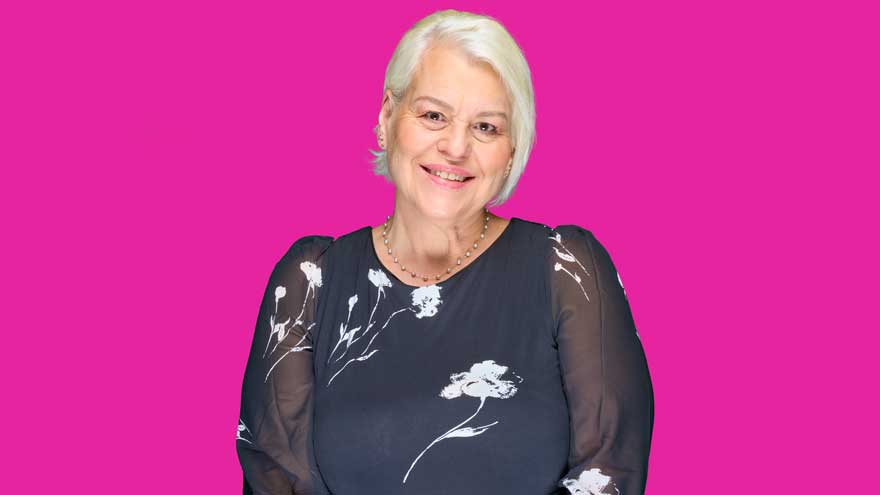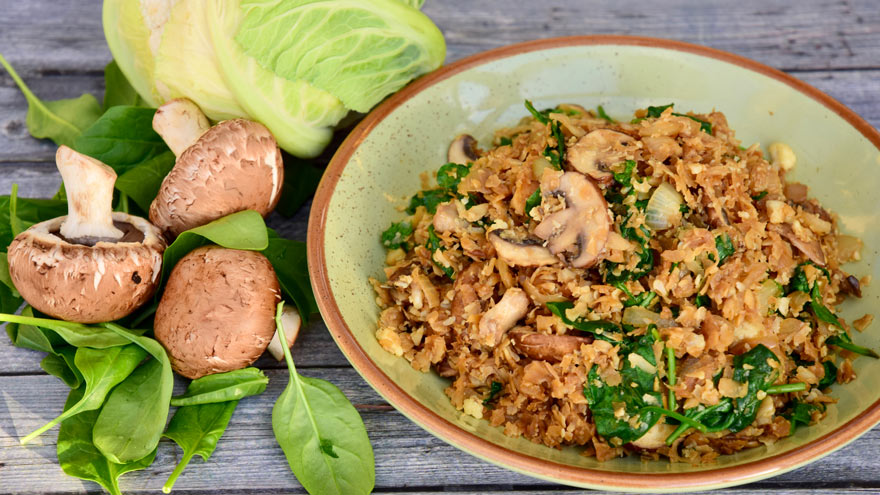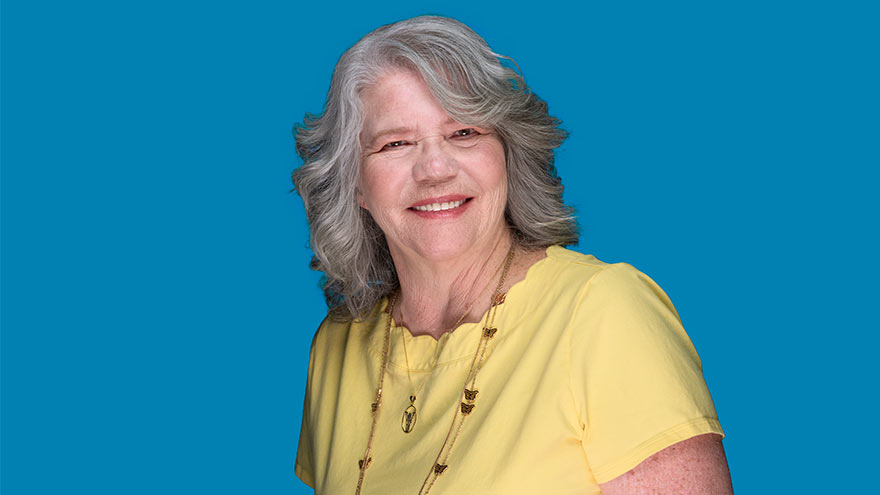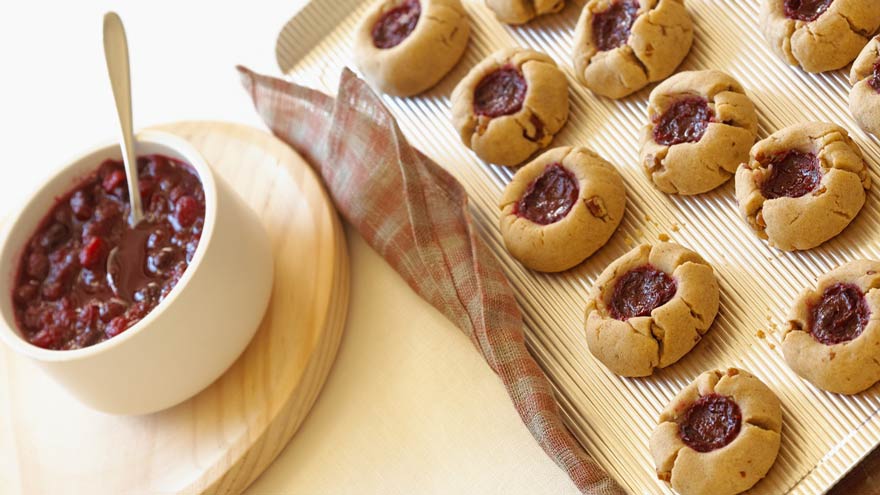Buscar
-
What is Disordered Drinking?
An alcohol problem can affect anyone at any age. Many factors, including job stress, genetics or depression, may contribute to the start of disordered drinking. Drinking alcohol exists on a continuum. For example, if someone feels down in the dumps for some time, it doesn’t mean they are clinically depressed. So if someone goes through a period with above-normal alcohol consumption, it doesn’t necessarily mean they abuse alcohol. Although “alcoholic” and “alcoholism” are common, they are not clinical descriptions. Alcohol use disorder is the preferred term. Symptoms are often mild but can be the start of a more significant problem. According to the National Institutes of Health (NIH), over 16 million adults live with alcohol use disorder. Symptoms of Alcohol Use Disorder Do you recognize any of the following symptoms in yourself or someone you know? Drinking more or longer than intended Trying to cut down or stop drinking but not able to Having to drink more than you once did to get the same feeling Being annoyed when family members discuss your drinking Regretting your behavior while you were drinking
-
Sterling Silver Club Member Masterpiece
A Gallery-Worthy Member Artistry usually refers to a person’s ability to express their unique creativity in powerful and surprising ways. But there is also an art to living your life in ways that celebrate who you are, your limitless potential, the people you love and the community you care about. So imagine our delight to discover a Sterling Silver Club member and artist whose artistry of life reaches far beyond gallery walls. An Early Love of Art Born in Chicago, Illinois, Debbie arrived as the last of her parents’ three children and has two older siblings, Cynthia and Henry (a.k.a. Skip). As is usually the case, school played an important role in their shared childhood and Debbie remembers being drawn to art assignments in class from an early age. “When I was a young girl, I loved working on various art projects at school,” she recalls. “I always found myself learning something new and then teaching it to everyone I knew.” Later, Debbie would play violin in the school orchestra, join the swim team, and to continue to learn about art and its broader influence. “I remember taking a class and learning about color theory,” recounts Debbie. “I was so impressed with how colors relate to one another and also discovered how primary and secondary colors can be used together to make everything from products and advertising to what we wear more pleasing to the eye.” Expression-ism. “Art allows you to express yourself,” says Debbie. “And I’ve always been quite happy being expressive.” Though Debbie’s affinity for art was obvious, it wasn’t destined to be her career… at least initially. After earning degrees in marketing and public relations at North Central College in Naperville, Illinois and George Williams College of Aurora University in Williams Bay, Wisconsin, respectively, Debbie began what turned out to be a career in technology. In the Chicago area, she held positions as a systems analyst and computer programmer and a role in marketing and public relations for a computer software company. Then it was off to Los Angeles, California with her new husband, David, where she worked in sales and education for another software company. The couple returned to Elmhurst, Illinois to start their family but eventually moved to and settled in Minden, Nevada where David had an insurance business for 23 years and their children grew to become the adults their grandparents dreamed of. “My mom and dad would be most proud of our children,” beams Debbie. “They (her parents) always hoped for the best for them and would be over the moon that they are doing what they want to do, two of them in the field of medicine.” Debbie and David now live in Carson City, Nevada and their three children have established lives of their own. Jeffrey, the oldest, is a pastor and holds two master’s degrees. Rachael is an OB/GYN provider in Southern California and a graduate of University of Nevada, Reno School of Medicine (UNR Med). And their youngest, John-Henry, is finishing up his medical training and will soon be a trauma surgeon. Furry Family Members Debbie’s other “kids” are of the four-legged variety. “Mercedes and Bentley are really our luxury pugs,” she admits. “But are named after famous characters from books, not luxury cars.” She also says they are goofy, much-loved and simply melt the hearts of everyone they meet – “always!”
-
¡Adiós a las fiestas, hola a las rutinas! Hacer que los niños retomen el ritmo cotidiano
The kids are back in school and the holidays are all but a distant memory: Now what? Karen Wagner, APRN, offers specific tips about getting kids back to their routines in the post-holiday-hustle-and-bustle. Are you finding the kids struggling with bedtime routines? Having trouble getting them to tackle homework? There’s a simple reason: The holidays messed with their mojo! Here, we talk with Nurse Practitioner Karen Wagner about what to do to get them back on the straight and narrow. Why Routines Are Important “Holidays are a fantastic time to get together with family and friends, so our routines are usually off — and this is understandable, “Wagner says. “While the holidays are exciting, they are chaotic and can put our kids out of the routines.” So how do you get kids back into those routines they crave? “Consistency/routines are crucial for our kids,” she says. “Most people — kids and adults — experience a let-down feeling after the holidays, and post-holiday adjustment takes time.” So what can we do, specifically? Wagner recommends the following: Re-establish family routines, including before- and after-school programs or child care routines. Once kids are back on the regular schedule, they’ll find that sense of familiarity as the old routine returns. But keep in mind, this won’t happen overnight. Encourage healthy eating, as the upheaval of their schedule can be offset by a balanced diet. Make sleep time a priority: Keep in mind that it might take up to three nights of strict bedtime to get them back on track. But enforcing normal bedtime will get their bodies back on a normal schedule. Return to usual chores and expectations. Nothing encourages a return to routine like reminding them of the basics. Incorporate indoor and outdoor time. They likely spent lots of time outdoors during our unseasonably warm winter break — and they even had a snow day or two! So encouraging both indoor and outdoor time will help them return to a circadian rhythm and tire them out from exposure to fresh air. “It is never too early to encourage a love for physical activity in kids by exposing them to fun fitness activities and sports,” Wagner says. “Physical activity improves bone health, cardiorespiratory and muscular fitness, decreases levels of body fat, reduces symptoms of depression, and improves cognitive skills and the ability to concentrate.”
Read More About Bye-Bye Holidays, Hello Routines! Getting Kids Back into the Groove
-
Suicide Risk How to Spot a Friend in Crisis
How can you tell if a friend is in trouble or struggling with suicidal thoughts? And how can you support them in finding help? Are you feeling virtually exhausted? Life is always challenging, but the mental fallout of a global pandemic is real. Contributing to the loneliness epidemic is the shifting American lifestyle. More Americans live alone (28%) now than ever before, and fewer have kids. First, let’s acknowledge this is a time of anxiety and worry for everyone. Economic uncertainty, job transitions, grief, and loneliness are a perfect storm for mental stress. Even before the COVID-19 (coronavirus) pandemic mental health was a concerning issue, now it is a relevant topic of crisis. Secondly, anyone can struggle with suicidal thoughts. Those suffering from drug addiction are especially vulnerable. In particular the U.S. is currently seeing a rise in drug overdoses by almost 18% due to the pandemic. Unfortunately, suicide is responsible for one U.S. death every 11 minutes, according to the Centers for Disease Control and Prevention. Not to mention the millions who think about it, make a plan or attempt it. It is important to remember that suicidal thoughts, plans or intent must be helped immediately. Understanding Suicide Risk To clarify, depression is not a choice. No one wishes for endless days of feeling down, sleepless nights, and feeling as if you are in a dark tunnel. Currently, one in five Americans will experience a mental illness this year. This means one of your friends is struggling, right now. Specifically, consider this: When your body feels pain it talks to your mind. When your mind is suffering who does it talk to? So, how can you tell if a friend is in trouble? According to the National Institute of Mental Health be on the lookout for some depression clues below. Signs and Symptoms of Depression Persistent sad, anxious, or “empty” mood Feelings of hopelessness, or pessimism Irritability Loss of interest or pleasure in hobbies and activities Decreased energy or fatigue Moving or talking more slowly Feeling restless or having trouble sitting still Difficulty concentrating, remembering, or making decisions Signs and Symptoms of Suicide Risk Expressing feelings of hopelessness or having no purpose Talking about feeling trapped or being in unbearable pain Talking about being a burden to others Increasing the use of alcohol or drugs Sleeping too little or too much Withdrawing or isolation Displaying extreme mood swings. Talking about wanting to die or to kill oneself (Reference: Suicide Awareness Voices of Education) How to Help a Suicidal Friend It can feel awkward to approach the subject of suicide with a friend, but take any of the above warning signs seriously. Other ways you can help are by: Encouraging self-care and making sure they take care of basic needs Listen to their worries without judgement Ask them what they need from you, then follow through with action Let them know they are not a burden Don’t minimize or invalidate their feelings Point them to helpful resources Be their advocate and get them help If someone you know is in a life-threatening crisis situation, call 911 immediately. Suicide Risk Resources: National Suicide Prevention 24/7 Lifeline: 1-800-273-8255 Ayuda En Español: (Spanish National Suicide Prevention Lifeline) 1-800-628-9454 Crisis Text Line: Text HOME (or CONNECT) to 741741 to chat with a crisis counselor 24/7 free of charge. The National Alliance on Mental Health: 1-800-950-6264 Substance Abuse and Mental Health Services Administration: (SAMHSA) 24/7 helpline 1-800-662-4357
-
Una pareja fuerte como las rocas
Renown’s Sterling Silver Club is honored to feature members of our club each season. We thank Mary and Dave for sharing their fun-loving story and all of our members for leading healthy, happy lives that inspire us all. Rock On! Rhyolite almost sounds like a rock band, but it’s not (at least not one that we are aware of). It is a ghost town near the eastern boundary of Death Valley National Park, the most silica-rich of volcanic rock – and the magma-based spark for what has become a very special relationship of our featured Sterling Silver Club member couple, Mary and Dave. “May I carry those for you?” Mary and Dave first met back in January of 2015 when they sat near each other at a financial seminar in Reno. Though friendly banter was exchanged at the time, contact information was not. It wasn’t until later that year in July when “rock karma” intervened. The two reunited unexpectedly when they joined friends on an excursion to Wonder Mountain near Fallon, Nevada to gather… Rhyolite! “I remember I enjoyed meeting Mary at the seminar and thought she was pretty, but didn’t get her phone number,” recalls Dave. “But that day in the desert, Dave asked if he could carry my rocks,” Mary smiles, “and we got each other’s numbers and began dating after that.” Since then, they’ve gone “rockhounding” all over the state. Smokey quartz brought them to Mt. Peterson, north of Reno. Daisy agates were worth a trip to Austin, Nevada. They’ve hunted for Larsonite, a rare, petrified bog wood found only in McDermott, and also venture out with the Comstock Gold Prospectors Club in search of that precious metal. Hiking, exploring and searching for interesting and colorful “finds” together make rock hunting one of the couple’s favorite hobbies. “I’m especially fascinated with petrified wood that’s been lying in the desert for millions of years until I dig it up,” says Dave. “Pretty cool!” The Pre-Rock Years Mary and her four siblings are first generation Chinese Americans. Her parents who emigrated from Malaysia to the U.S. by way of Canada after World War II and raised the family in Northern Virginia. After earning a bachelor’s degree from the College of William and Mary, our Mary started a career in software training and project management. Now retired, she occasionally goes to work helping friends and family with travel reservations. Dave and his three siblings were born and raised in Southern California. He remembers his parents taking the family camping in the Sierra Nevada mountains a couple times a year and trips out to the sand dunes in San Filipe, Mexico where they’d stay for weeks at a time. Dave began his career in the restaurant industry right out of high school and was eventually recruited to run a developer’s hotel restaurant and be his personal chef. Dave wrapped up his career in 2012 when he stepped down as executive chef at Circus Circus Reno Hotel & Casino. More recently on the non-work front, Dave’s son, Cameron, and his wife, Rebecca, have blessed grandpa Dave with a granddaughter, Madison – and there’s a grandson on the way! Getting to Know You Mary and Dave also use their time to collect travel experiences that have allowed their relationship to deepen and their appreciation of each other to grow. They’ve camped at Death Valley and locations throughout the Nevada desert and admit to more civilized stays in hotels and resorts in Ireland, Mexico, Portugal, Spain and the United States. They also spend a week every fall paddling their canoe along the shores of Lake Tahoe, which they call the most beautiful place in the world. Well, when you travel that much with someone, you really get to know them. “Mary has the clever wit to keep things interesting,” says Dave. “Plus she has the patience to put up with my little quirks and idiosyncrasies, and the gumption to keep me out of trouble!” And Dave’s cooking skills have found a fan in Mary, who’s a bit of a cook herself. “My favorite dish of his is roast duck,” says Mary. “I offered a little coaching and showed him the traditional way of serving it with steamed rice pancakes, hoisin sauce and spring onions.” Mary also enjoys spending time bulldog spotting, restoring her 1992 Mazda Miata, playing the ukulele, crocheting and knitting – and she’s teaching herself Spanish! Member-to-Member Advice Mary and Dave enjoy socializing with other Sterling Silver Club members and learning how to better care for their health at different club events. As for their advice to other members? That’s simple: “Live the best life you can by taking care of yourself and your family and friends.” The Sterling Silver Club thanks Mary and Dave for giving us a glimpse inside their ROCKIN’ relationship and appreciates all of our members for being passionate about living their best lives.
-
4 fantásticos beneficios para la salud de estar libre de desorden
The Benefits of Being Clutter-Free Gives you a better sense of well-being. Did you know procrastination is linked to clutter? According to a recent study clutter problems led to less life satisfaction, especially among older adults. Helps you lose weight. Constantly being in cluttered room, office or car can be stressful. All the undone cleaning tasks in the back of your of mind cause stress, which is linked to obesity. Promotes mental health. Having clutter around can make you feel anxious or overwhelmed. This prevents you from truly relaxing or focusing. Saves you money. It’s not a secret that money worries cause stress. According to a Journal of Consumer Research study, you’re more likely to make a purchase when you’re sitting in a messy room compared to a tidy room. Clutter-Free Tips Start with a plan. Make a list of your clutter-improvement priorities and the tasks needed to accomplish each one. Focus on one section of your home per week, so you don’t get overwhelmed. In fact, organizational expert Peter Walsh suggests starting with the easiest room first to gain momentum. Conversely, "The Life-Changing Magic of Tidying Up" author Marie Kondo suggests organizing by category (for example clothing or books). Experiment with an organizing plan that appeals to you. There are also many helpful on-line calendars you can use as a starting point. Delegate when you can. Include your children and spouse into your plan. Is uncle Bob an electrician? Then get him to swap out your eyesore of a ceiling fan or update an old light fixture. Of course it’s ok to outsource the duties - such as window cleaning or painting - if your budget allows. Buy less. The less you purchase the less you need to store, clean, keep track of, organize or dust. Seems simple, right? Not for everyone. On average we are bombarded with over 4,000 marketing messages a day, not to mention FOMO (Fear Of Missing Out) when we see our friends posting about their newest toys on their social media feeds. Focus on quality over quantity. When in doubt, throw it out. Still on the fence about what to throw away? Use these declutter decision-making guide questions to help you. Organize Your Health Along with taking care of your surroundings, make a commitment to get up to date on your health checkup and screenings. Preventing an illness is a bargain compared to the cost of a chronic disease. It's also a good idea to go through all of your medications and check the expiration date. Remember to properly dispose of medications. DO NOT flush medications down the drain or toilet, unless the label indicates it is safe to do so.
Read More About 4 Fantastic Health Benefits of Being Clutter-Free
-
Ensalada sabrosa con fideos y aderezo de maní tailandés
Looking for a main course or premade lunch recipe? We’re serving up the most delicious cold salad, perfect for when you’re craving a flavorful, crunchy, pea-nutty dish. Best of all, it’s versatile! This salad can be easily made with protein, or as vegan, and/or gluten-free. Add diced chicken or edamame beans to this refreshing dish if you need that extra protein kick. This slaw is dietitian-approved, with it having more vegetables than noodles and heart-healthy ingredients to keep you going.
Read More About Tasty Noodle Salad with Thai Peanut Dressing
-
Conexiones sociales: por qué benefician su salud
Some days a chat with a friend is all you need to feel better. Why? Because humans are social beings. Although we have more technology than ever at our fingertips, sometimes we may still feel left out or disconnected. Dr. Buddy Coard, Ed.D., Psychologist at the Stacie Mathewson Behavioral Health Addiction Institute at Renown, discusses the importance of social connections and tips on how to keep connecting, warning signs of loneliness and how to feel less lonely. Why are Social Connections Important? Dr. Coard points to significant research on the topic of loneliness and social connections. He uses the findings below to detail how social connections affect our overall health. In a recent survey 40% of participants reported they sometimes or always feel that their relationships are not meaningful and that they feel isolated. Surprisingly, this survey suggests Generation Z (18-22 years old) is the loneliest generation. Another study associates loneliness as a risk factor for early death. It indicates lack of social connection heightens health risks as much as smoking 15 cigarettes a day, or having alcohol use disorder. In fact, loneliness and social isolation are twice as harmful to physical and mental health as obesity (Perspectives on Psychological Science, Vol. 10, No. 2, 2015). A 2018 study investigated several standard measures of social isolation, including marital status, frequency of religious service attendance, club meetings/group activities and number of close friends or relatives. The findings revealed race as a strong predictor of social isolation. In particular, black men and women were more likely to be lonely than were white men and women. Loneliness also switches on your body’s long-term “fight-or-flight” stress signaling system, which negatively affects your immune system. People who feel lonely have lower immunity and more inflammation than people who don’t. Dr. Coard recommends the following tips for those who feel lonely. Tips to Increase Social Connection Get outside. More and more nature prescriptions are common. In fact even a 10 minute walk can elevate your mood and get your blood flowing. Develop a schedule of activities to accomplish in a week, setting realistic goals. Monitor your technology. Of course, watching the 24/7 news cycle can be depressing. Turn off the TV and listen to music or read a book instead. Even better, use technology to connect with family members by having a virtual game night or book club discussion. Write it out. When was the last time you sent a good old-fashioned letter or card? Or even wrote in a journal? Try to brighten someone’s day with snail mail. Writing down your hopes and fears also helps you to get worries off your mind and process your emotions. With this in mind, there are also volunteer opportunities to support others by sending a handwritten letter to others battling depression. De-clutter your surroundings. Go through those old photos and put them in an album. Clean out a drawer, cupboard or closet. You will feel a sense of accomplishment and can donate items you no longer need that others can enjoy. Increase your joy by reducing your clutter. Warning Signs of Chronic Loneliness One size does not fit all when it comes to loneliness. For this reason, loneliness can be different depending on your particular situation and your unique personality. However, if you feel some (or all) of the following symptoms, chronic loneliness may be affecting you: Lack of ‘best’ or close friends. You connect with others on a surface level, but feel no one truly understands you. People are n your life, yet you are not connecting on a deep, intimate level with them. You feel lonely even when people are around. This means feeling disengaged or not part of the group when around others. You feel less than enough. You often doubt yourself or don’t feel good enough when comparing yourself to others. And social situations feel exhausting. What Can Someone Do to Feel Less Lonely? Dr. Coard offers the following suggestion for those with a lack of social connections: Talk with your doctor, psychologist or another healthcare professional. Sometimes chronic loneliness relates to longstanding negative beliefs that an individual has about themselves. Engage in behavioral activation. For example, being more active and involved in life by scheduling activities which can potentially improve your mood and decrease feelings of isolation. Initially behavioral activation can be very challenging due to lack of motivation, but setting a reasonable schedule of activities is a good start. Pay attention to your sleep. Sometimes when people become lonely they experience significant changes in their sleep cycle. Frequently they sleep too much, or too little. Make sure to maintain a normal, healthy sleep/wake cycle, following good sleep hygiene recommendations.
Read More About Social Connections: Why They Benefit Your Health
-
Healthy Side Dish Cauliflower Rice
Finding the perfect cauliflower rice side dish can be challenging. Let's face it, not too many of us love the taste of cauliflower. However, this low-carb side dish is perfectly paired with chicken, rounding out a healthy meal. This recipe can also go well as a base to build a healthy and balanced protein bowl. Cauliflower Rice How-to Guide You can buy frozen riced cauliflower at just about any store, making it easy to throw into your recipes. However, if you want to make cauliflower rice yourself, here are some helpful tips to get you started. Registered dietitian Caitlin Bus hopes you'll give cauliflower rice a try as an alternative to traditional rice, allowing you to add more servings of vegetables into your diet!
-
Un miembro del Club con una gran anécdota
Renown’s Sterling Silver Club is honored to feature one of our more than 9,000 members each season. We thank Judith for sharing her inspirational story and all of our members for leading healthy, happy lives that inspire us all. Mother, grandmother and eventually great-grandmother is the expected title progression as families grow and babies have babies. “Grand” and “great” usually imply roles and responsibilities have shifted from daily child-rearing duties to those of a doting grandparent – that is, unless you decide to do it all over again. At the age of 61, that’s exactly what featured Sterling Silver Club member, Judith, decided to do when she adopted four of her great-grandchildren. At the time, Alicia, Adrianna and Joey were all under five and Giancarlo, the youngest, was just a baby. “At the adoption hearing, the judge was concerned how stressful it would be for me to raise four children in my late 70s and early 80s,” recalls Judith. “But I told him I had raised my own four children and then three grandchildren for a number of years and that it would be far more stressful for me to have my great-grandchildren separated from each other and me, possibly forever. I knew I could handle the stress of raising them no matter my age, but I couldn’t survive the stress of losing them.” “That was when Giancarlo started getting fidgety,” she continues. “So I raised up his little shirt and blew a raspberry on his tummy which made him giggle and settle down. Seeing that, the judge told the recorder to “put that move in the record” and agreed I was capable of caring for my little ones.” Years later, Judith has come to realize that her great-grandchildren also want to be there to care for her. “Giancarlo always makes me smile,” says Judith. “Once during a stay in the hospital, I was awoken at 3 a.m. for blood work and found him sitting next to my bed watching the oxygen count – he was 10 years old at the time.” “The nurse asked him why he was awake and he said he heard her say the count shouldn’t go below 88, so he was watching to save me if it did,” Judith explains. “The nurse reassured him that she was also watching the count at her desk and he didn’t need to worry. Then Giancarlo looked her square in the eye and told her if it went below 88 to wake him up because he loved me and didn’t want to lose me.” “He is still my sunshine,” Judith smiles. “And I have never regretted my decision.” Work & Play For 20 years, Judith worked at Truckee Meadows Community College (TMCC), first as an administrative assistant for the police academy before moving to a position in the president’s office. There she worked with the TMCC Foundation and on TMCC projects to raise capital funds for new buildings, off-site campuses, scholarships, college programs and more. “It felt wonderful to be able to notify a student that they had received a scholarship or tell a department that they had received the funds to purchase needed equipment for their program,” recalls Judith. For fun these days, Judith still enjoys doing something she did as a teenager: playing pool. “My mother taught me to play pool in my dad’s pool room/teen hangout space in my early 20s and I’m just getting back into the game by taking lessons to help remind me what I was taught,” says Judith. “I grew up in a small, country town on the Ohio River and my mother could beat almost all of the boys in the county. I would love to be able to emulate her ability in the game.” Judith also enjoys reading, watching Hallmark movies or Warriors basketball games, walking in nature, playing “competitive” shuffleboard with friends, all genres of music – and dancing! In fact, she’s currently taking dance lessons to learn a few new steps. Always Good for a Laugh “My great-grandchildren and I laugh a lot when I try to teach them the stroll, twist, mashed potato and old-fashioned, rock-‘n’-roll dancing,” admits Judith. “But we laugh even harder when they try to teach me their dance moves!” Faith in What Matters Faith is something Judith celebrates and embraces for herself and others. “I truly believe that we are placed on earth exactly where God feels we are needed and that we are here to help each other through life, not to accumulate material goods for ourselves,” says Judith. “I feel deep satisfaction when I can help others either through just listening to them, advising them, helping them with specific needs or simply giving a smile to a stranger. To me, giving a smile or a helping hand to someone is like skipping a rock across the water – the ripples go on and on.” Then she adds, “And raising my great-grandchildren to be able to have wonderful lives full of love and happiness and closeness to God is the greatest gift I could give them.” Club Talk So what does Judith appreciate most about being a member of the Sterling Silver Club? She says it’s the opportunity to just – talk. “I fully enjoyed my initial interaction with the club and other club members at the Roaring Twenties dinner dance event,” remembers Judith. “I sat at a table with the nicest ladies and had great conversations with adults and danced with one of the instructors. When you are raising four teenagers who sometimes seem to speak an entirely different language, it’s refreshing to meet and speak with others your own age.” Pictures of some of the popular Sterling Silver Club events are featured here. Judith finds club events that bring her joy. “I also like the cooking classes and recently went on a walking tour of Oxbow Park, which was very peaceful.” What advice does Judith have to help other members live their best and fullest lives? “On a wet December morning 50 years ago,” Judith begins, “a truck coming around a curve on a country road slid into me and that split second could have made all the difference in the world to me. But God was with me and I survived, which no one expected.” “You never know when that one second that could change everything might happen, so make the most of all of your seconds,” she advises. “Do what you love with those you love. My family means the world to me and I try to think about how my decisions will reflect on the memory I will leave behind for them.” Then Judith thoughtfully adds, “I want them to remember that I truly loved them and always did my best to let them know that.”
-
Wholesome Raspberry Thumbprint Cookies
There is no shortage of sweet treats during the holiday season, making it hard to keep our health on track. With all of the delicious aromas mixed into holiday cookies -- vanilla, peppermint, molasses, ginger, pecans and chocolate --the dessert table could use a healthy makeover that doesn’t compromise flavor. We challenged Caitlin Bus, Registered Dietitian with Renown Healthy Heart Program, to come up with a healthier cookie recipe to share with your family and friends this holiday season. These vegan thumbprint cookies are soft, slightly chewy, nutty and sweet, made with almond flour, a hint of maple flavor and topped with raspberry jam (or the jam of your choice). Even better, these holiday cookies require just eight simple, healthy ingredients and are gluten-free, dairy-free, egg-free, oil-free and optionally sugar-free too!
-
Tasty Turkey and Veggie Chili with Kale
Meet your new go-to healthy chili recipe for fall. Made to share or freeze the leftovers for an easy lunch or dinner. There’s nothing like homemade chili to warm you up on those cold winter nights. With just the right amount of comforting flavors and garden-fresh veggies, this crowd-pleasing favorite could prove to be your go-to healthy comfort meal.











